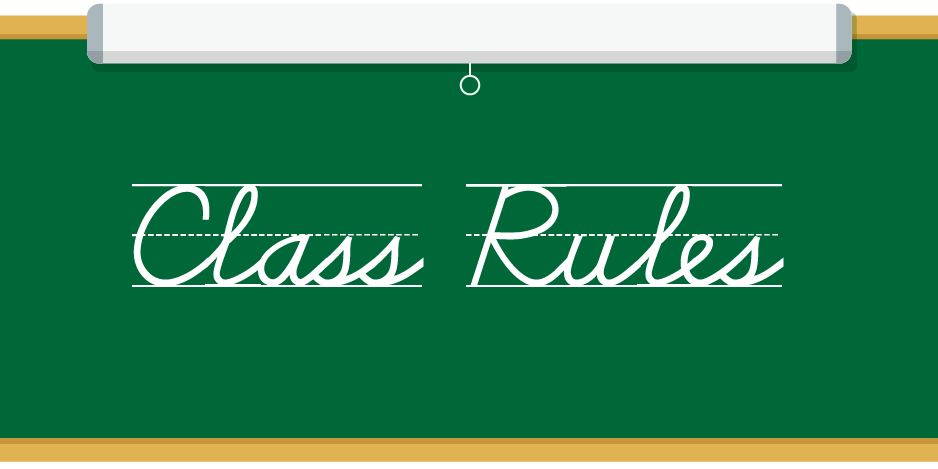Educational and emotional success for all students begins with classroom rules that are fair and reasonable. Help your students understand boundaries and expectations for classroom behavior by setting and enforcing rules with clear and consistent consequences.
Why Are Classroom Rules Important?
Elementary and middle school classroom rules set expectations. They let everyone know how they should behave and why. Fair rules shouldn’t change your classroom’s culture too abruptly, but they should allow space for creativity, personality, and communication.
They ensure the physical and emotional safety of students and protect their educational experience from disruptions or offenses. Guidelines for behavior shouldn’t feel restricting – they should feel enriching. Every student should understand and feel that the classroom is a safe space, and rules will help to create that space.

Creating Classroom Rules
Imagine your ideal classroom culture. Should students raise their hands before talking, or are students free to speak as they please? Can students move around the room, or should they remain in an assigned seat?
Then, imagine your students’ ideal classroom culture. Where does it intersect with your own vision? Where does it not? Consider if there are compromises you can make to create a comfortable space for everyone. Use these visions to shape the structure of your rules.
Involving your students in creating the classroom rules can help to establish open communication. Students might feel empowered by having more control over their educational space and, therefore, be more likely to follow the rules. They’ll know the rules are fair, reasonable, and benefiting everyone. Throughout the school year, students might even come to you with additions or changes to the rules as the class evolves.
Whether establishing the rules yourself or working with your class to create them, keep in mind that many students have more than one teacher throughout the school day, so staying consistent with your rules is crucial. Keeping your classroom’s rules closely aligned with those of your school and your fellow teachers will help prevent confusion and disruptions.
Here are some examples to help you and your students get started, though they may vary based on your school’s policies:
Examples of Classroom Rules
All grade levels
“Be kind to your classmates and teacher.”
“Don’t speak when others are speaking. Take the time to listen.”
Elementary School Classroom Rules
“Move where you please, but when the teacher is speaking you must find a place to sit.”
“Never give up on an assignment. If a classmate can’t help you find an answer, bring it to the teacher for help!”
Middle School Classroom Rules
“Phones are for emergencies. If you know you may need to check your phone, speak with the teacher before class.”
“If you’re late to class, silently find your seat. Talk with the teacher during break or at the end of class.”
As you create each rule either on your own or with your class, establish reasonable consequences for each rule. What consequence would make sense for what offense? What happens if the rule is broken multiple times by the same student/s?
Make sure these consequences are clear to each student so that when a rule is broken, they will understand their offense and its repercussions. And, as with classroom rules, provide reasoning for classroom consequences.

How to Teach Classroom Rules
If your classroom’s rules were created in collaboration with your students, a lot of the work in teaching and enforcing these rules may have been done for you.
However, if you established the classroom’s rules yourself, you may still need to lay the foundations. To introduce rules to your students, start with the reasoning behind them. Let them know that the rules will keep them safe, make the classroom comfortable for everyone, and promote an undisrupted education experience. You can also ask if anyone has anything they would like to add or if they think any of the rules are unfair.
It can also help to create a visual of the rules in your classroom. You can even try having your class create the visual themselves! Write out the rules, or have a student write them, on a poster then have everyone color around the words or draw representations of the rules next to them. Wrap up the activity by having each student sign their name at the bottom as if it were a contract, and use this experience as an opportunity to have everyone involved in the rule-setting process.
From then on, if a rule is broken, you can ask the student/s about the rule and its reasoning. Then, once the proper consequences have been administered, you can see if the student or the class thinks the rules are still fair or if they need to be adjusted and why. Remaining consistent with rules and consequences is important but so is communication. Make it routine to check in with your students on the rules and how they feel about them.
While you’re here, consider signing up for a free eSpark account below so you can start enjoying a unique blend of play-based learning and evidence-based pedagogy. It’s a better way to practice elementary math and reading skills, and you won’t find a more engaging supplement for your lessons.



